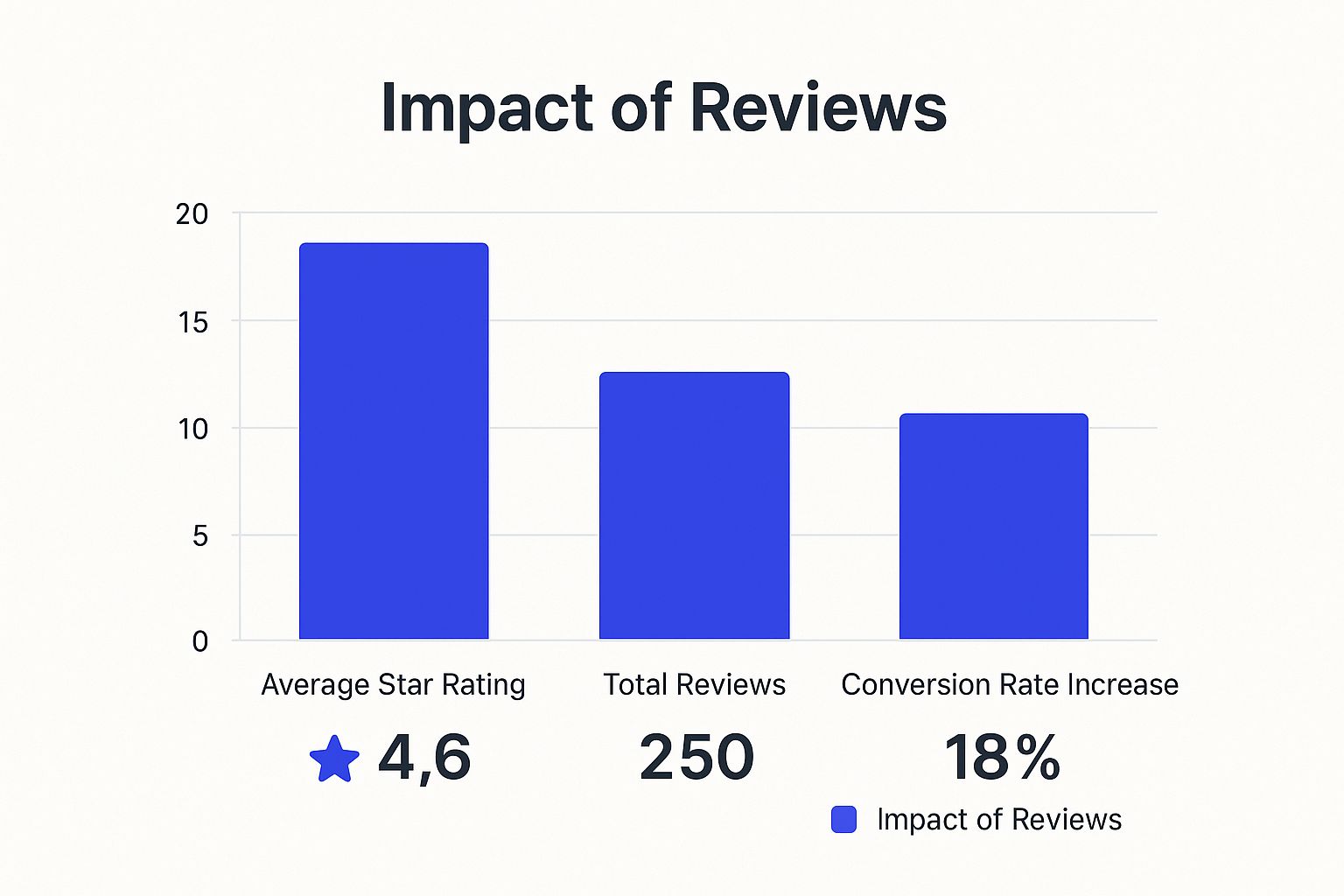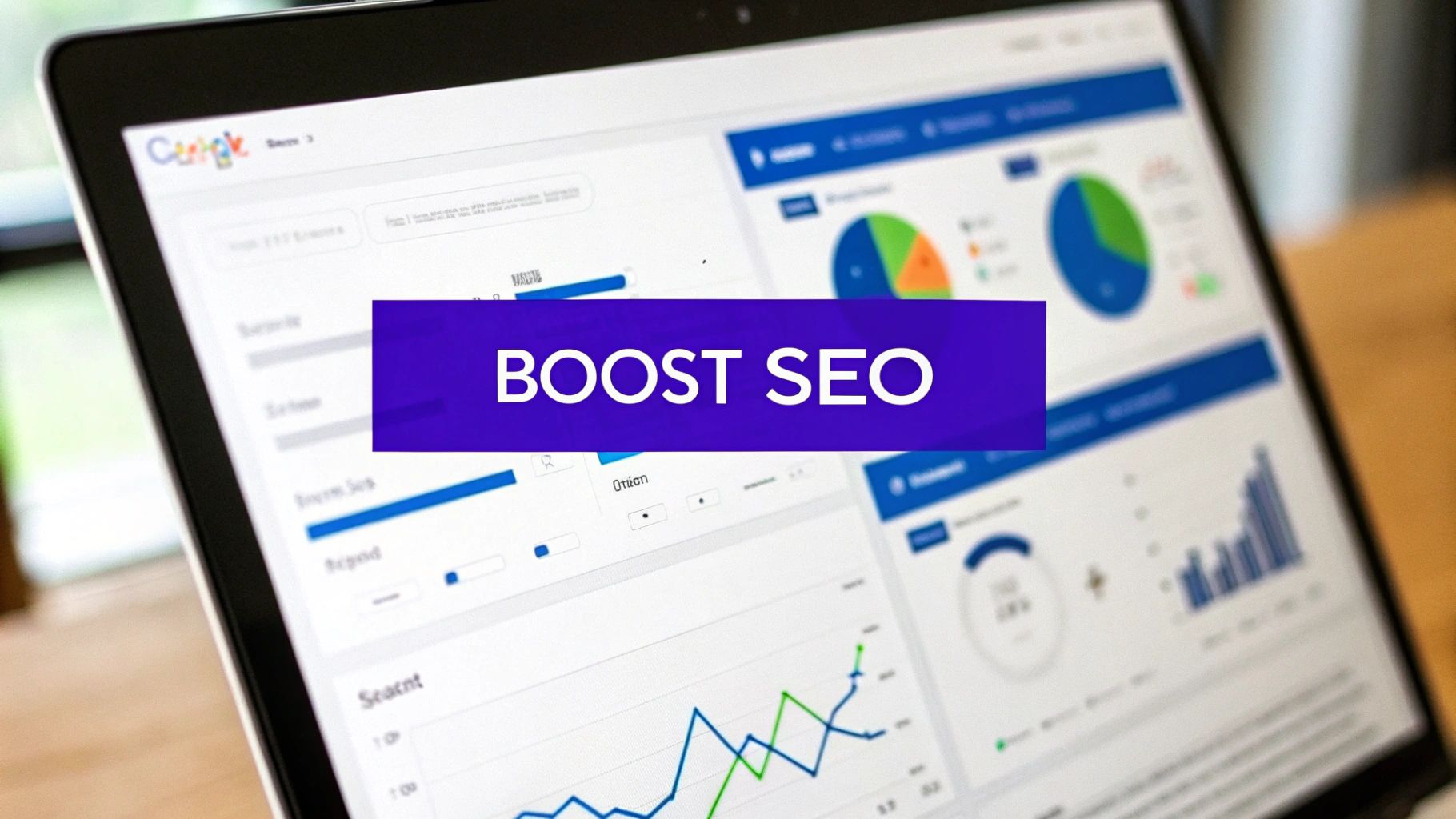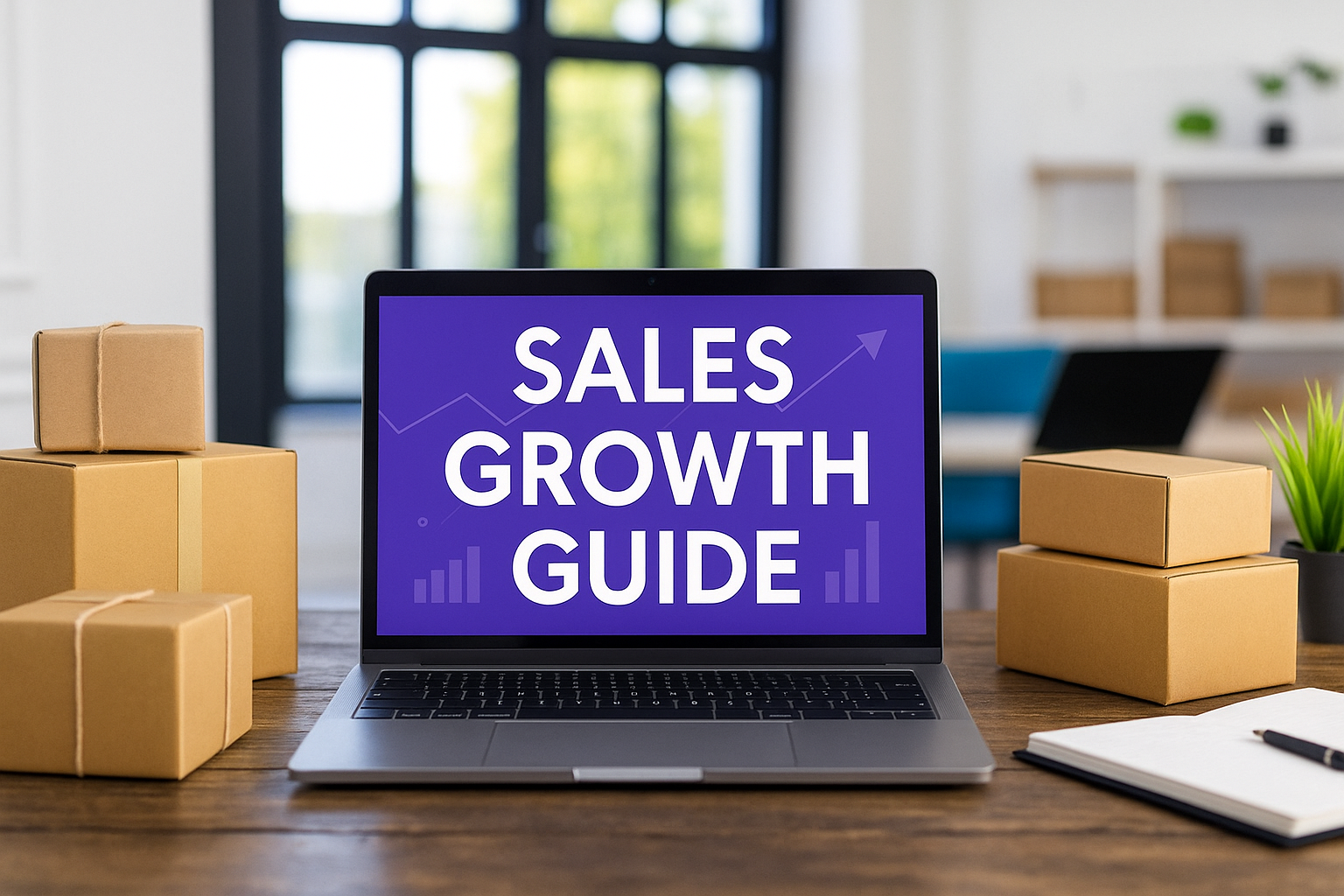Mastering the Shopify Ecosystem for Revenue Growth
Shopify isn't just a platform for building an online store; it's a vibrant ecosystem designed to help you grow your sales. Think of it as a comprehensive toolkit, providing everything you need to thrive in the competitive world of eCommerce. From brand-new startups to well-established businesses, Shopify supports a wide range of merchants. But how can you effectively use its potential to turn your store into a revenue-generating machine? The key is strategically utilizing the platform's strengths.
Understanding Shopify’s Infrastructure
Shopify's infrastructure rests on three core pillars: its app marketplace, customization options, and analytics dashboard. The app marketplace offers a vast collection of specialized apps that extend your store's functionality.
Need help with email marketing? There's an app for that. Want to streamline inventory management? There's an app for that too. You can even find apps for AI-powered customer service. These apps let you tailor your store to your specific needs, similar to how a chef selects the perfect ingredients for a recipe.
Shopify also provides extensive customization options, allowing you to control your store's appearance and create a cohesive brand experience. This includes customizing themes, crafting unique product descriptions, and optimizing the checkout process for a smooth customer journey. You can curate the user experience, much like an artist meticulously crafts a painting.
Consider bundling your physical products with a digital course. For example, if you sell skincare products, include an exclusive “Glow Up Routine” video course hosted in Tevello. It’s a smart way to increase perceived value and drive loyalty especially when your educational content complements the product experience.
Finally, Shopify’s robust analytics dashboard provides valuable insights into your store's performance. This data encompasses everything from website traffic sources to customer conversion rates, empowering you to make data-driven decisions about your sales strategy. You can pinpoint areas for improvement and make adjustments, just like a gardener tending to their plants.

Tapping into Shopify’s Potential for Growth
This interconnected ecosystem holds the potential for substantial revenue growth. This is evident in Shopify's own financial success. In 2023, Shopify's annual revenue reached $7.06 billion, a significant 26.07% increase year-over-year. This growth suggests ongoing improvements to the platform, directly benefiting merchants' sales strategies.
Further demonstrating this growth, Shopify now powers over 5.23 million active online stores, facilitating approximately $1 trillion in global online sales. You can explore more detailed statistics here: Learn more about Shopify statistics. This underscores the platform's impressive reach and the wealth of opportunities available to merchants.
Simply having a Shopify store isn't enough. You need to actively engage with the ecosystem, strategically combining its built-in tools with a well-defined sales plan.
Building Sustainable Growth
Successful Shopify merchants don't focus solely on short-term sales gains; they build engines of sustainable growth. They recognize the importance of integrating Shopify’s core features with a comprehensive sales strategy.
This involves consistently analyzing their data, experimenting with new apps from the Shopify App Store, and refining their approach based on customer feedback. This iterative process allows them to continually optimize their stores for maximum sales potential.
By mastering the Shopify ecosystem, you can create a thriving online business that generates consistent revenue. In the next section, we'll delve into the crucial process of transforming your Shopify store into a high-converting machine.
Transforming Your Store into a Conversion Machine
Creating a Shopify store is just the beginning. The real work lies in optimizing it to effectively convert visitors into loyal customers. This means understanding customer behavior and refining every element of your store, from product organization to the checkout process. Successful online businesses know that optimization relies on data, allowing them to achieve conversion rates 2-3x higher than average.
Optimizing Product Presentation
Your product pages serve as your online storefront. Compelling product descriptions and high-quality visuals are essential. Think of your descriptions as your virtual sales team. They should not only explain the product but also emphasize its benefits and address any potential concerns. Your product photography should present the item in its best light, highlighting key features and creating a connection with the shopper.
For instance, instead of saying a shirt is "made of cotton," describe it as having a "soft, breathable cotton fabric that offers luxurious comfort." This creates a sensory experience that customers can relate to. Combining this with professional images showcasing the shirt's texture and fit can greatly improve conversions.
The Mobile Experience
With most online shopping now done on mobile devices, optimizing the mobile experience is critical. A mobile-friendly design is about more than just looks; it's about functionality. Ensure your site loads quickly, navigates easily, and provides a seamless checkout on all devices. Even small improvements, like simplifying the checkout process or optimizing button placement, can have a major impact on your sales. Some businesses have seen double-digit conversion increases just by improving their mobile checkout.
The Power of the Checkout Flow
A well-designed checkout process is vital for reducing cart abandonment. Clearly displaying shipping costs, offering various payment methods, and ensuring a secure checkout experience can boost conversions. Unexpected fees at checkout can lead to frustration and lost sales. Transparency and a streamlined process build trust and encourage purchases.
Key Elements for Conversion Rate Optimization
The table below outlines crucial store elements and how they influence conversion rates. It provides a comparison of common issues, optimization strategies, and the potential impact these changes can have.
Conversion Rate Optimization Elements for Shopify Stores
| Store Element | Common Issues | Optimization Tactics | Potential Impact on Conversion |
|---|---|---|---|
| Product Descriptions | Unengaging, lack of benefits | Highlight key benefits, use sensory language, address customer objections | Significant increase |
| Product Photography | Poor quality, uninspiring | Professional photos, multiple angles, lifestyle shots | Moderate to significant increase |
| Mobile Experience | Slow loading, clunky navigation | Optimize for speed and ease of use, simplify checkout | Significant increase |
| Checkout Flow | Hidden fees, complex process | Transparent pricing, multiple payment options, secure checkout | High increase |
By focusing on these elements, you can transform your Shopify store into a high-performing sales engine. For more tips on boosting your Shopify sales, check out this helpful resource: How to master Shopify sales for increased revenue.
Expanding Beyond Your Store With Multichannel Selling

A well-optimized Shopify store is a fantastic foundation. But relying only on direct traffic might limit your sales. Imagine a fisherman casting a line in one spot. They might catch a few, but they’re missing the rest of the ocean. To truly maximize your sales, you need multichannel selling.
This simply means selling your products across several online platforms. High-growth Shopify merchants understand this strategy, using it to connect with a much larger audience.
Why Multichannel Selling Is Crucial for Shopify Growth
Expanding to social commerce, online marketplaces, and comparison shopping engines dramatically boosts visibility. Think of each channel as a new fishing spot, each with its own type of customer. By being present on many platforms, you attract a more diverse customer base.
Maintaining a consistent brand identity across these platforms is crucial. Each channel has its own audience and expectations. You’ll need to adapt your messaging and marketing materials while ensuring a cohesive brand experience. For example, your Instagram style might differ from your Amazon approach, but your core brand values should remain the same.
Using multiple sales channels is key for increased Shopify sales. In 2024, about 90% of Shopify merchants connected their stores to two or more channels. This diversification helps reach a broader audience and maximize sales potential. Find more detailed statistics here. This proved especially valuable during high-traffic periods like Black Friday and Cyber Monday, with Shopify brands reaching $4.2 million per minute in sales.
Optimizing for Each Channel
Managing multichannel sales effectively goes beyond simply listing products. It requires channel-specific optimization. This includes tailoring product descriptions, images, and pricing to each platform's unique audience.
Managing inventory synchronization is also critical to avoid overselling and maintain accurate stock information. A centralized inventory management system streamlines this, preventing customer frustration and lost sales. Unified analytics are essential, providing a complete overview of your performance across all platforms. This data-driven insight helps you identify high-performing channels and refine your strategies.
Choosing the Right Channels
The right channels for your business depend on your products and target audience. Consider factors like the demographics of each platform's users, successful product types, and the level of competition. You might be interested in: How to master selling digital products on Shopify. To further enhance your store, consider strategies to improve Shopify conversion rate. By carefully analyzing these factors, you can pinpoint the most profitable channels and build a multichannel strategy for sustainable growth.
Another powerful sales channel? Education. By launching an online course or digital membership, you open the door to recurring revenue and deeper customer engagement. With Tevello, you can create and sell online courses directly within your Shopify store, no external tools required. Whether you’re sharing your expertise in fitness, design, crafts, or coaching ,education becomes your next revenue stream.
Leveraging High-Impact Shopify Apps for Sales Growth
Not all Shopify apps are created equal. Some can significantly boost your sales, while others just add unnecessary complexity. This section will help you identify the truly impactful apps that contribute to a healthy bottom line. We'll explore key app categories like upselling and cross-selling tools, abandoned cart recovery solutions, loyalty programs, and analytics platforms, analyzing their potential impact on your revenue. Instead of choosing apps based on popularity, learn to select the tools that address your store's unique sales challenges.
Choosing the Right Apps for Your Needs
Many merchants install apps based on hype rather than strategic planning. It's like adding ingredients to a recipe without understanding their purpose. Too many ingredients can ruin the dish, just as too many apps can slow down your store and complicate operations. The key is to choose apps that directly solve your specific problems.
For example, if abandoned carts are impacting your sales, an abandoned cart recovery app is a logical choice. These apps send automated emails reminding customers about items left in their carts, often including incentives to complete the purchase. If your average order value is low, consider upselling and cross-selling apps. These apps suggest related products during checkout, encouraging customers to add more to their order.
Maximizing ROI Through Strategic Implementation
Even the best apps require a solid implementation strategy to achieve optimal results. This involves configuring the app correctly, seamlessly integrating it with your workflows, and continuously monitoring its performance. It's like buying a powerful tool without knowing how to use it – the potential is there, but it needs to be applied effectively.
Implementing a loyalty program, for instance, requires more than just installing the app. You need to design a compelling rewards structure, promote the program effectively, and regularly analyze customer engagement. Similar considerations apply to analytics platforms. Data collection is just the first step. The real value comes from interpreting that data and using it to inform your sales strategies.
The infographic below illustrates the impact of product reviews on conversions. It shows how the average star rating and total number of reviews can contribute to a significant lift in conversion rates.

As the infographic demonstrates, a high average star rating coupled with a substantial number of reviews can lead to an 18% increase in conversions. This highlights the importance of incorporating user-generated content, like product reviews, to build trust and encourage purchases.
To help you choose the right apps for your Shopify store, we've compiled a table summarizing essential app categories, their functions, and typical sales impact.
Essential Shopify Apps for Increasing Sales: Data on key app categories, their functions, and typical sales impact
| App Category | Key Functions | Implementation Difficulty | Average Sales Lift | Pricing Considerations |
|---|---|---|---|---|
| Upselling & Cross-selling | Suggest related products during checkout | Easy | 5-15% | Varies, often based on usage or sales generated |
| Abandoned Cart Recovery | Send automated emails to recover lost sales | Easy | 10-20% | Varies, often monthly subscriptions or per-recovery fees |
| Loyalty Programs | Reward repeat customers with points, discounts, and exclusive offers | Medium | 10-25% | Varies, often monthly subscriptions based on features and number of customers |
| Analytics Platforms | Track store data, analyze customer behavior, and identify sales trends | Medium | Varies, depends on how data is used | Varies, from free plans to enterprise-level subscriptions |
This table provides a quick overview of the potential benefits and considerations for each app category. Remember to research specific apps within each category to find the best fit for your individual needs.
Measuring Results and Avoiding Bloat
Regularly evaluate the performance of your installed apps. Be prepared to remove any app that isn't providing a positive return on investment. Keeping unnecessary apps is like carrying extra weight; it slows you down. Prioritize apps that demonstrably increase sales, improve conversion rates, or enhance customer satisfaction.
By carefully selecting and strategically implementing the right Shopify apps, you can significantly enhance your store's sales performance.
Breaking Geographic Boundaries for Exponential Growth

Limiting your Shopify store to just your home country can really hold back its growth potential. Imagine a bustling fruit stand thriving in your neighborhood, but completely ignoring the rest of the city – that’s what it’s like. This section explores how expanding internationally can unlock significant sales opportunities, without needing a huge initial investment. You can expand gradually and strategically.
Understanding the Global Marketplace
Many successful Shopify merchants have wisely targeted international markets, recognizing the enormous potential of a global customer base. This involves taking measured risks and finding the sweet spot between effort and reward. For example, you might focus on regions where your specific product niche is particularly popular.
This expansion isn't just about translating product listings. It requires a deeper understanding of each market's unique characteristics. Think language, cultural preferences, consumer behavior, and economic factors. If you sell clothing, for instance, you might have to adjust your sizing charts to match regional standards.
Shopify's market share plays a big role in boosting sales. With a 10% global share of the e-commerce market, Shopify connects merchants with a vast customer base. This strong international presence is essential for global sales growth. The fact that 30% more global merchants joined Shopify in the first half of 2024 underscores its potential. Want to delve into the data? Explore this topic further.
Adapting Your Store for International Customers
Successfully tapping into global markets involves a few crucial steps. First, localization is key. Accurate translations of your website, product descriptions, and marketing materials will build trust with international customers. But true localization goes beyond simple translation. It means adapting your content in a way that is culturally sensitive and resonates with your target market.
Next, offering seamless currency conversion makes buying easier for international shoppers. Displaying prices in their local currency reduces confusion and encourages purchases. Offering a range of international payment options is also vital. Familiar and trusted payment methods create a smooth and reassuring experience for your new customers.
Navigating International Logistics
Finally, effective shipping strategies and a solid grasp of compliance requirements are essential. Competitive shipping rates and dependable delivery services are key to attracting global customers. Navigating international regulations and ensuring you comply with local laws builds confidence and trust. This means understanding things like customs duties, import restrictions, and other regulatory obstacles. Looking to boost sales on Shopify? Explore some of the best Shopify Subscription Apps for leveraging high-impact tools. By addressing these factors strategically, your Shopify store can successfully break through geographic limitations and unlock its potential for exponential growth.
Building Marketing Campaigns That Actually Drive Sales
Even the most optimized Shopify store needs effective marketing to consistently drive revenue. This section goes beyond the typical advice and dives into what truly makes a Shopify marketing campaign successful. We'll explore how to craft customer acquisition funnels that use both Shopify's built-in features and external marketing tools. Think of your marketing campaign as a well-oiled machine, with each part working together seamlessly to attract and convert customers.
Understanding Your Audience and Segmenting for Success
Effective marketing starts with a deep understanding of your target audience. Who are they? What are their needs and behaviors? This knowledge is the foundation for creating targeted campaigns that resonate. Audience segmentation allows you to divide your customer base into smaller groups based on shared characteristics, such as demographics, purchase history, or browsing behavior. This personalized approach ensures your marketing messages connect with the right people at the right time.
For example, you might segment your audience into groups like "first-time buyers," "repeat customers," or "high-value shoppers." This allows you to craft messages and offers specifically designed for each group, increasing their effectiveness.
Building Effective Customer Acquisition Funnels
Once you understand your audience segments, you can start building targeted customer acquisition funnels. These funnels guide potential customers through the buying process, from initial awareness to final purchase. A typical funnel might include stages like:
- Awareness: Attracting potential customers through social media ads, blog posts, or influencer marketing.
- Interest: Piquing their interest with engaging content, special offers, or product demos.
- Desire: Creating a desire for your product by highlighting its benefits and addressing customer pain points.
- Action: Encouraging them to take action, such as adding the product to their cart or making a purchase.
Each stage of the funnel requires a specific approach. For example, awareness-stage content might focus on educating potential customers about a problem your product solves, while action-stage content might offer a limited-time discount to encourage immediate purchase.
Tracking, Measuring, and Optimizing for ROI
Simply launching campaigns isn't enough. You need to track their performance and measure their return on investment (ROI). This involves setting clear goals and using analytics tools to track key metrics, such as website traffic, conversion rates, and customer acquisition cost. This data provides valuable insights into what's working and what's not, allowing you to make necessary adjustments. Think of it as fine-tuning your marketing engine for optimal performance. You might be interested in: Learn more in our article about 10 eCommerce customer retention strategies to boost sales.
High-performing merchants implement trackable campaigns, using unique URLs, discount codes, and conversion pixels to monitor the effectiveness of their efforts. This detailed tracking enables them to accurately measure the ROI of each campaign and continually optimize for better results.
Case Studies and Real-World Examples
Let’s examine a hypothetical case study: A Shopify store selling handmade jewelry implemented a Facebook ad campaign targeting women aged 25-40 interested in fashion and accessories. They tracked the campaign's performance using a Facebook pixel and found that the ads generated a 15% click-through rate and a 5% conversion rate. By analyzing this data, they were able to refine their targeting, ad copy, and visuals to further improve the campaign's ROI.
Another example might be a Shopify store selling organic skincare products that used email marketing to nurture leads and encourage repeat purchases. They segmented their audience into groups like "new subscribers" and "previous customers" and sent targeted emails with personalized product recommendations and exclusive offers. This resulted in a 20% increase in repeat purchases and a 10% increase in average order value.
By analyzing these successful marketing campaigns, we can identify common elements that drive results: clear targeting, compelling messaging, trackable metrics, and continuous optimization. These elements are crucial for building marketing campaigns that actually translate into increased sales.
Turn Your Knowledge Into Profit
Selling knowledge is one of the most scalable ways to increase your Shopify sales.
With Tevello, you can package your expertise into online courses, exclusive content, and private communities, all hosted inside your Shopify store. No need for third-party platforms or disconnected tools.
Why it works:
-
Builds trust and authority
-
Increases average order value
-
Creates a new recurring revenue stream
-
Deepens customer loyalty through learning
Whether you’re a maker, coach, or entrepreneur, Tevello helps you deliver more than just products you deliver transformation.
Ready to grow your Shopify store with digital courses and memberships?
With Tevello, you can easily sell online courses and build loyal communities - all from your existing Shopify setup. 👉 Try Tevello Free on the Shopify App Store




